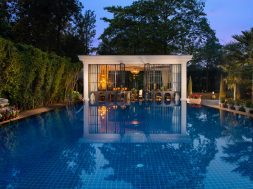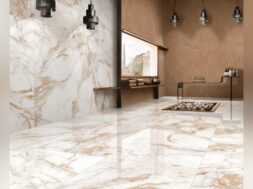Designs for uber experience at airports

Understanding visitors’ expectations, thrust should be on comfort and luxury while keeping functionality intact.
Airport infrastructure has notably improved over the years in terms of comprehensive area, wide approach to airport and airport-area development. The emphasis is on locating compatible activities — industry, commerce, open space — in the immediate vicinity, and incompatible ones, residential areas in particular, at a distance.
Towards sustainability
Making structures sustainable is the need of the hour. There is a great deal to be done on the national level, including assisting in the development of more efficient engine noise reduction techniques, airport feeder systems, and perhaps specialised land-use controls before airport environmental problems can be resolved and opportunities fully considered. In the meantime, currently available techniques can be used more effectively in improving the relationship of the airport to its environment, says Ar. Er. S. P. Anchuri, Chief Consultant, Anchuri and Anchuri.
Sustainability and technology are two trends that have dramatically impacted the design of terminals over the past 20 years. Extensive arrays of photovoltaic panels, geothermal and solar energy, daylighting strategies and displacement ventilation are some of the more noteworthy.
“One of the first airport terminals that created an identity through its physical form, Denver International Airport has been remarkably successful. Its iconic and distinctive fabric roof has become the airport’s identity, evocative of the city’s identity. Vancouver International Airport was an airport with an existing 1960s vintage terminal, and the masterplan that was put in place contemplated a series of incremental expansions to the terminal that would respond to demand as-and-when needed,” says Ar. S.K. Goel, Conarch Architects.
Denver International Airport (DEN) and Vancouver International Airport (YVR) are the landmark projects against which other airports continue to be benchmarked. Architecturally, DEN was one of the first airport terminals to create an identity through its physical form. The YVR airport felt that, it was important for the terminal to create a memorable passenger experience through itsarchitecture, interior design, artwork and exhibits, informs Ar. Surinder Bahga, Sakaar Foundation.
Integrated approach to urban development
In this new century where air travel has become more stressful, airport design should focus on urban integration through architectural clarity and spatial openness.
“The building movement of users should be enhanced by interiors and terminal function. Along with uniqueness and minimal design language, the interiors should be inspiring, integrating with the seemingly timeless surroundings. The fusion of structural engineering, architectural art, functionality with urban contextualising, should be sustainable in terms of reducing carbon emissions, long-term cost savings by implementing new-age design technologies and local construction practices, says Prof. Charanjit Singh Shah (Founding Principal) and Ar. Gurpreet Shah (Principal Architect), Creative Group.
Key trends
Planning
Airports value special consideration in the planning process both interiors and exteriors because of their special needs and because of their enveloping effects on the environment. Aspects and prospects both play key role in influencing the trends. “Planning the airport system requires a high degree of coordination of the activities of governmental bodies with an influential segment of the private economy, opines Anchuri.
The key trends that are shaping the design of airport terminals are synergism, technology, sustainability and the sense of place. Technology is enabling the existing infrastructure to be streamlined, transforming the terminal design. “The airports today are incorporating factors that appeal to all the senses through a combination of architecture, interior design, artwork, exhibits and media, digital or otherwise. The airports should be designed in a way that communicate a unique and distinctive ‘sense of place’ that is relevant for its city and community, explains Goel.
Lot of factors influence the interior and exterior structure such as: easy orientation, simplicity, minimum walking distance, minimum level changes and so on, according to Bahga.
“Adoption of colours and shapes, innovative signage’s, changing floor patterns, installation of few art pieces which may serve as distinctive place markers for way-finding and orientation should be in trend, with increasing demand of more functions to be catered in one terminal building,” adds Prof. Charanjit and Ar. Gurpreet Shah.
Sustainability
Sustainability has had a major impact in the designing of airports over the last 20 years. It has become a mainstream design element whether it’s a workplace, home, commercial space or now even airports across the world, says Avijit Marwah, Director, EvoWood.
Considering airports are such huge manmade spaces and require artificial air to be pumped in, adding biophilic design elements to airports and getting a space like this that is closer to natural elements like water, greens and wood are of the emerging trends. For example, Changi Airport is the world’s best airport today and has gardens inside its terminals along with huge waterfalls to bring design and nature together.
Visitor experience design
Airport management should understand the type of experiences that visitors seek within an airport environment in order to create higher levels of satisfaction which, ultimately, would result in increased revenue and this brings in sea change approach in design of airport right from smaller to the biggest, saysAnchuri.
Major airports are expanding Biometric technology applications to speed up the flow of passengers. Airports are also executing self-service and passenger interactions with technology via AI and robotics to enhance their visitor experience, informs Goel.
An efficient airport design is which where the passenger’s journey is as smooth as possible. “With the use of clear signs and graphics, the interior courtyards can create a new definition of user experience along with guiding routes. On average, a passenger spends 133 mins in an airport in which 80 per cent of discretionary time is when the passengers enjoy the airport facilities including retail and leisure activities, says Prof. Charanjit and Ar. Gurpreet Shah.
One main cue to enhance visitor experience and functionality is a process called ‘wayfinding’. Visual suggestions that herd passengers quickly and efficiently to their gates without them realising that they are being herded. It can be done by using the colours, shapes and patterns of signs that differ from terminal to terminal, and by large art pieces that serve as distinctive place markers for orientation, feels Bahga.
Key requirements of passengers
Promising luxury, relaxation and comfort before take-off, theairport specially the lounge design must consider the essential requirements of the passengers.
“More emphasis must be given for VIP lounges which can include auto air conditioned or with a central fireplace in cold regions, a free massage chair, an entertainment area with plasma TV screens and wireless headphones, as well as a full bar service and a light menu, says Anchuri.
The use of ‘acoustically noisy’ interior surfaces, for example, can be replaced by sophisticated materials that create a soothing and serene environment. Ongoing and future airport expansion projects should be projected toboost the safety of passengers and flight crew. Technology should be used creatively to enhance the security process making it less stressful. The infrastructure should further be enhanced by new software upgrades, to make them more efficient and passenger-friendly, according to Goel.
Airport design should aim to offer each of the passengerswith an exceptional transit experience and feel essential to not only provide the visitors with the striking first impression of the city, but also to cherish the hospitality and care that is comparable with the state’s heritage and culture, says Prof. Charanjit and Ar. Gurpreet Shah.
Light, colour and texture should all be employed to aid passenger movement at this critical point in their journey through the terminal, according to Bahga.
The design and planning around newer airports are all targeted towards creating a calm, functional and aesthetically pleasing airport environment. This can make a huge difference to the overall travel experience of any passenger or for that matter even a frequent flyer who spends a lot of his or her time at an airport, says AvijitMarwah, Director, EvoWood.
Modern decorative lightings
NEMO represents within the design lighting producers’ scenario, a benchmark name, going back to the roots of innovation that always inspired Italian design. The collection of contemporary design includes models conceived by Carlo Forcolini, Jehs + Laub, Javier Mariscal, Karim Rashid, IlariaMarelli, Foster+Partners, Hannes Wettstein and Roberto Paoli. “Alongside with this wide range of products, Nemo edits the Masters collection, a unique selection of icons, realised by the designers that have provided a fundamental contribution to the creation of the contemporary design: Le Corbusier, VicoMagistretti, Franco Albini, Charlotte Perriand and KazuhideTakahama. NEMO is owned by Federico Palazzari, says Roopesh Gupta, MD & CEO, P3 Architectural Solutions.
Nuvola Pendant
Mario Bellini
Pendant, ceiling/wall and floor lamps. in natural opal polyethylene, in rotational printing.
In the Wind Pendant Horizontal
Arihiro Miyake
Floor and pendant lamp for a warm and widespread LED lighting.
Linescapes System
Linescapes is a modular system that is completely changing the approach to high performance diffused direct and indirect lighting.
Projecteur 365 Wall Ceiling
Le Corbusier
The Projecteur of Le Corbusier was designed for the Chandigarh High Court, India, in 1954. Aluminium body painted in night blue, white sand or moka. Available in the floor, wall/ceiling and pendant versions. The wall or ceiling and pendant lamps are available also in the outdoor version (IP54).
High performance, pure acrylic exterior paint
Nippon Paint has specially designed theWeatherbond PRO, a high performance, pure acrylic exterior paint which offers outstanding protection for exterior surfaces. The product has superior water resistance and offers protection against algal attack, dust pick-up, hairline crack bridging, efflorescence and extreme weather, says S Mahesh Anand, President – Nippon Paint (India) Private Limited (Decorative Division).
Weatherbond PRO base paint is an elastomeric paint with fibers which ensure high-performance. It provides effective waterproofing and anti-carbonation properties that would be ideal for the exteriors of an airport that is usually prone to severe weather conditions, he adds.
Planning the airport system requires a high degree of coordination of the activities of governmental bodies with an influential segment of the private economy.
Ar. Er. S. P. Anchuri, Chief Consultant, Anchuri and Anchuri
The airports should be designed in a way that communicate a unique and distinctive ‘sense of place’ that is relevant for its city and community.
Ar. S.K. Goel, Conarch Architects
With the use of clear signs and graphics, the interior courtyards can create a new definition of user experience along with guiding routes.
Prof. Charanjit Singh Shah (Founding Principal) and Ar. Gurpreet Shah (Principal Architect), Creative Group
Lot of factors influence the interior and exterior structure such as: easy orientation, simplicity, minimum walking distance, minimum level changes and so on.
Ar. Surinder Bahga, Sakaar Foundation
Sustainability has had a major impact in the designing of airports over the last 20 years.
Avijit Marwah, Director, EvoWood
NEMO represents within the design lighting producers’ scenario, a benchmark name, going back to the roots of innovation that always inspired Italian design.
Roopesh Gupta, MD & CEO, P3 Architectural Solutions
Nippon Paint has specially designed the Weatherbond PRO, a high performance, pure acrylic exterior paint which offers outstanding protection for exterior surfaces.
S Mahesh Anand, President – Nippon Paint (India) Private Limited (Decorative Division)
21
Cookie Consent
We use cookies to personalize your experience. By continuing to visit this website you agree to our Terms & Conditions, Privacy Policy and Cookie Policy.









